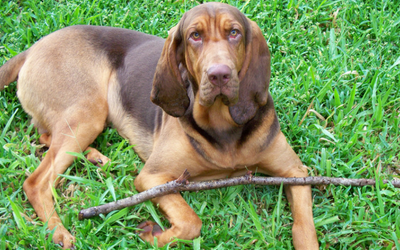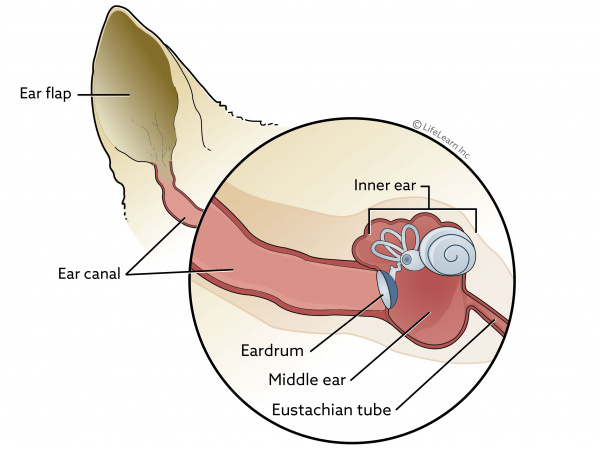Dog Ear Infection Feed Store Medicine
My dog has just been diagnosed with an inner ear infection. What is this?
Inflammation of the inner ear is called otitis interna , and it is most often caused by an infection. The infectious agent is most commonly bacterial, although fungus (otherwise known as yeast) can also be implicated in an inner ear infection.
If your dog has ear mites in the external ear canal, this can ultimately cause a problem in the inner ear and pose a greater risk for a bacterial infection. Similarly, inner ear infections may develop if disease exists in one ear canal or when a benign polyp is growing from the middle ear. A foreign object, such as grass seed, may also set the stage for bacterial infection in the inner ear.
Are some dogs more susceptible to inner ear infection? 
Dogs with long, heavy ears seem to be predisposed to chronic ear infections that can ultimately lead to otitis interna. Spaniel breeds, such as the Cocker Spaniel, and hound breeds, such as the Bloodhound and Basset Hound, are the most commonly affected breeds. Regardless of breed, any dog with a chronic ear infection that is difficult to control may develop otitis interna if the eardrum (tympanic membrane) is damaged, as a damaged ear drum allows bacteria to migrate down into the inner ear.
"Dogs with long, heavy ears seem to be predisposed to chronic ear infections that ultimately lead to otitis interna."
Excessively vigorous cleaning of an infected external ear canal can sometimes cause otitis interna. Some ear cleansers are irritating to the middle and inner ear and can cause signs of otitis interna if the eardrum is damaged and allows some of the solution to penetrate too deeply.
What are the signs of an inner ear infection? 
The signs of otitis interna depend upon the severity and the extent of the infection. Some dogs may show no outward signs at all, but you may notice your dog is reluctant to chew or seems to be in pain when opening his mouth. He may shake his head or paw at the affected ear.
Your dog may develop a head tilt, usually to the side of the infected ear, and he may even lean, fall, or roll toward the infected side. His balance may be completely altered making it difficult to walk properly, and he may even walk in circles toward the side of the infected ear. If both ears are involved, you may see him swing his head from side to side like an elephant swinging its trunk, and he may have a difficult time staying on his feet. Also, dogs with active otitis interna cannot hear on the affected side(s).
Are there other signs I should watch for?
Vomiting and nausea may occur during the acute phase of otitis interna. If the facial nerve, which is located in the area of the inner ear, is damaged by an inner ear infection, your dog may develop some of the following symptoms:
- d rooling from the side of the mouth
- d ifficulty eating and dropping food
- inability to blink
- development of dry eye in the unblinking eye (see handout "Keratoconjunctivitis Sicca (KCS) or Dry Eye in Dogs")
- eye discharge
- drooping of the eyelids, lips, and nostrils on the affected side
- signs of Horner's syndrome (see handout "Horner's Syndrome in Dogs") which include uneven pupil size, called anisocoria (the pupil is smaller on the side on the infected ear), prominent third eyelid, and drooping upper eyelid on the affected side
With long-term facial nerve paralysis the face may actually twist toward the side of the ear infection.
Additional signs include redness in the affected ear and discharge with a foul odor. The outer ear canal may become thickened and hard to the touch from chronic inflammation and the lymph node at the base of the chin on the affected side may become enlarged. Your dog may become reluctant to move at all, preferring to sit or lay in one spot and his head may swing from side to side, even at rest. You may also notice short, rapid, side-to-side movements of the eyeballs called nystagmus .
How is otitis interna treated?
Otitis interna is a very serious condition. If your dog is unable to eat or drink normally due to nausea or disorientation, then hospitalization for intravenous fluid therapy is generally warranted. Nausea must be controlled and dehydration avoided. It may also be necessary to sedate or anesthetize your dog in order to adequately see the ear tissues, take samples for bacterial culture, and appropriately clean the ear.
Treatment of the underlying infection is very important, and your veterinarian will prescribe the appropriate medications. Medications will be administered directly in the ear and orally. Antibiotics (such as amoxicillin-clavulanate, enrofloxacin, clindamycin, or cefpodoxime) will be used for a bacterial infection for 6-8 weeks minimum. If the infection is fungal in nature, an anti-fungal medication (most often itraconazole) will be prescribed. Whatever medications are chosen, it is critical that they be given precisely as prescribed.
"If your dog has an altered balance, restrict his activity during treatment to prevent falling injuries."
If your dog has an altered balance, restrict his activity during treatment to prevent falling injuries. These dogs should not have access to stairs as they may take a tumble. You may also need to hand feed your dog temporarily - reaching down into a dish may stimulate nausea.
Dogs with otitis interna occasionally require surgery if they have relapses, they do not respond to medical management, or if they deteriorate in spite of treatment. Surgery is reserved for dogs with fluid build-up in the middle ear, an infection of the bone surrounding the ear (called osteomyelitis), or a mass (benign or malignant tumor) that arises from the middle ear or the eustachian tube (the tube leading from the middle ear to the back of the mouth). Surgery may be performed to drain the middle ear cavity or, in severe cases of middle and inner ear infection, the entire external ear canal may also be removed. For more information on this surgery, see handout "Total Ear Canal Ablation and Bulla Osteotomy (TECA-BO)". The severity of the nervous system signs associated with otitis interna does not determine the need for surgery.
Are there any potential complications or long-term effects of otitis interna?
A severe inner ear infection can actually spread to the part of the brain that controls your dog's breathing and heart rate, although this is quite rare.
Two potential long-term complications of inner ear infection include a permanently altered sense of balance and/or persistent signs of Horner's syndrome. Your dog may also become permanently deaf in the affected ear.
That said, most dogs with otitis interna respond well to medical management. Expect a two- to four-month course of oral antibiotics to prevent a relapse. The altered sense of balance that generally accompanies otitis interna is typically improved within two to six weeks. Small dogs may recover their balance more quickly than large breeds.
saltauthermse2001.blogspot.com
Source: https://vcahospitals.com/know-your-pet/inner-ear-infection-otitis-interna-in-dogs
0 Response to "Dog Ear Infection Feed Store Medicine"
Post a Comment